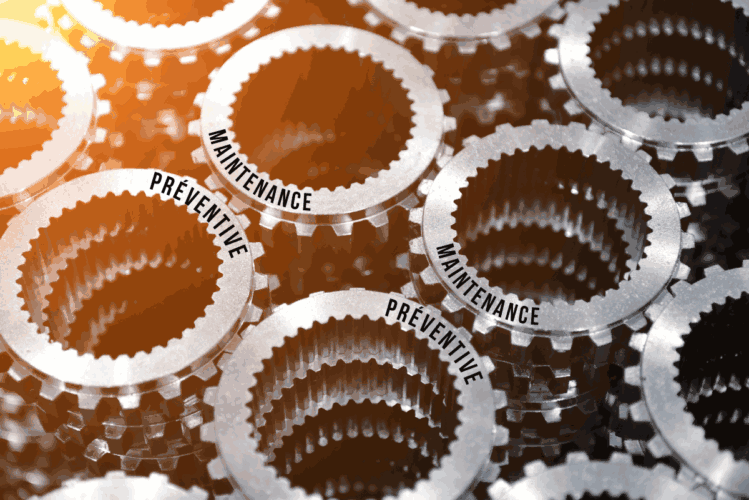Preventive maintenance may seem elementary at first glance, but 55% of companies still practice corrective (reactive or run-to-fail) maintenance. Under this practice, your building’s systems run until a problem or breakdown occurs. It’s a well-known fact that this type of maintenance generates much higher operating costs for a company.
Instead, opt for an effective, long-lasting preventive maintenance program by following these five steps:
1: Defining preventive maintenance procedures
To define your maintenance plan, you first need to ask yourself an important question: what results does your company expect from a preventive maintenance program? If you’re looking to save money, you should focus on:
- Reduce unplanned production downtime
- Reduce spare parts costs
- Reduce labor costs
- Reduce manufacturing downtime
- Increase manufacturing time per equipment
- Increase product quality
- Increase equipment lifetime
The best preventive maintenance procedures are written by professionals familiar with OEM (Original Equipment Manufacturer) recommendations. Some companies also offer turnkey maintenance programs. These should understand the performance history of the machines and the services required in your environment. They should pay particular attention to:
- The age of each equipment
- Static and dynamic systems
- Power losses and peaks
- Environmental impacts
- Operator errors affecting each equipment
To detect and repair equipment problems before components fail, a detailed analysis must take place. If the architects of your preventive maintenance program don’t look closely at the causes of equipment failure, they will omit some of the inspections that should appear in your program’s task list. It is advisable to seek advice from a firm with building mechanics expertise.
Procedures should also specify how to work safely with these tools, and how to maintain them.
2: Planning preventive maintenance procedures
Once the appropriate procedures have been entered into your computerized maintenance management system, each one needs to be scheduled. In most buildings, this means setting up daily, weekly, monthly, quarterly, semi-annual and annual maintenance.
While not all machines will require daily or weekly preventive checks, most will require monthly, quarterly, bi-annual and annual reviews. To draw up a quarterly maintenance schedule, many base themselves on their monthly calendar, taking care to add in some maintenance that is not required every month, but to be carried out more than twice a year. This also applies to bi-annual and annual maintenance, which are based on the quarterly schedule, but also contain inspections required twice a year or more. If these programs are set up correctly, your maintenance time will be reduced to a minimum.
3: Preventive maintenance training: surround yourself with a solid team
Training for preventive maintenance tasks is critical. It can make the difference between spotting a seemingly harmless problem, which will save you an extremely costly repair later on, and overlooking a problem that will bring your production line to a standstill for days or even weeks. If a company doesn’t have the time to train its own staff, it’s best to outsource maintenance and set up a maintenance plan.
4: Preventive maintenance management plan
Today, numbers are key, and preventive maintenance managers are also trying to measure the essentials. If you have an effective work order system in place, which records maintenance work hours, materials and reasons for each work order, you may be able to measure:
- How many work orders were issued for each piece of your equipment
- Which work orders were issued following a breakdown
- Which work orders require the use of spare parts
- How much labor time is required per work order
Entering operating system details will also help you track power surges and equipment cost reductions and fine-tune the frequency of maintenance tasks.
5: Communicate, communicate, communicate
Even the best preventive maintenance program ever devised will fail if workers don’t understand where to invest their efforts and how they will benefit. If they don’t see the benefits of past maintenance programs, be prepared for negative perceptions.
If the design of maintenance programs is crucial, so is communication with workers. They need to know what’s going to be done. Who will do what, and when? What performance measures must they meet?
Workers need to be informed that the maintenance program is clear, that continuous improvement is the primary objective, and that everyone’s input is valued. In addition to training, which is of the utmost importance, your communications must help workers understand that preventive maintenance will save them extra work.
Need help? Does this seem like a daunting task? Would you like to benefit from our turnkey expertise in creating a maintenance plan? Contact us via our contact form or by telephone at 514 422-0444.




